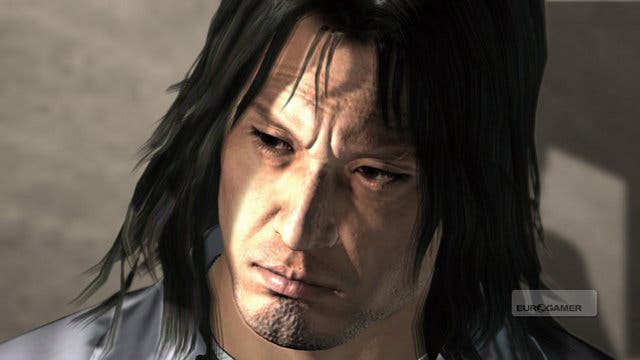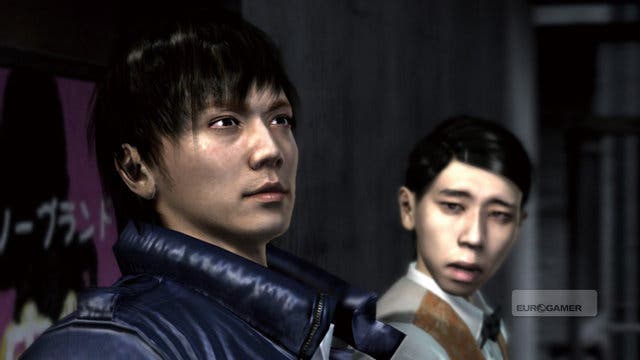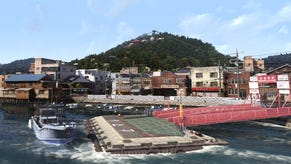Yakuza 4
SEGA's superseries broadens further.
A young chap in a purple parka advises him to run, saying the police will force a confession out of him. He's Masayoshi Tanimura, a slightly crooked cop; he's shown betting money in local bars, then accepting bribes from the bar-owners in return for not turning them in for illegal gambling; he evidently has ties with the Chinese community, too. In a combat montage, we see him slapping handcuffs on downed gangsters after kicking them squarely in the balls.
The last character, Taiga Saejima, is introduced with the best, most gruesome cut-scene we've seen in the series. He's a burly, emotionally damaged escaped convict, locked away 25 years ago for massacring 18 rival gangsters in a ramen bar. The game's depiction of this massacre is absolutely brutal - with two handguns in his pockets, two in his jacket, two in his hands and one in his mouth, Taiga strolls into the bar and starts shooting customers whilst others flee in terror or try in vain to wrestle him to the floor - he shoots one assailant in the stomach, another in the face. There's evidently a conspiracy behind this incident that is at the heart of Yakuza 4's story.

Yakuza 3's amazingly annoying Chase Battles are back - they were quick-time fights, essentially, where you had to keep up with someone and follow button prompts to avoid obstacles - as are the in-battle button prompts that unleash back-snapping, head-smashing special moves, which seem even better choreographed than before. There's lots of switching between third-person and close up to emphasise the juicier moments and a trail of blue, as ever, denotes the trajectory of punches and kicks. The other three characters' fighting styles are distinctly different from Kiryuu's - Masayoshi in particular seems far more acrobatic. 4's world, claims the trailer, is much broader, with rooftops and sewers and underground carparks joining the previous games' city streets as a backdrop to the action. The subways and rooftops particularly evoke Japan's strange, angular urban architecture perfectly.
It's the new brand-based, 'play spot' and creepy girl-grooming mini-games that really broaden the offering, though. For the first time, Yakuza 4 has actual pachinko, endorsed by one of Japan's biggest and most ubiquitous pachinko parlours. There's improved karaoke, with a new duet mode and the opportunity to, er, sing with schoolgirls. Fishing's back, and darts, and so is baseball - the trailer shows Taiga hitting baseballs at a billboard to reveal a reclining lady in underwear. All the arcade games - Answer X Answer, the UFO machines - are back in Club SEGA outlets, and there's a Japanese ryoukan (sort of like a spa-based inn) where you can take cabaret girls, enjoy the hot springs and play table tennis in your dressing gowns - the trailer shows a ping-pong ball bouncing balletically in slow-motion off a nearly-exposed bosom.

The trailer also takes a minute or two to expand on the extremely creepy cabaret-girl grooming from Yakuza 3. It's a very sinister subgame where you take a smart-looking career woman off the street and transform her into a made-up hostess doll in a sparkly dress for the entertainment of bar patrons. All the hostesses are voiced now, too - usually by famous Japanese drama stars.
Yakuza 4's only just been announced, but it looks practically finished - it's built on exactly the same architecture as 3, clearly, so all SEGA has had to do is come up with a new story to frame Yakuza 3's iconic brawling, exploration, completion lists, nonsense mini-games and hostess-grooming. Assuming the publisher doesn't change its stance on localising the series for the West, though, most of us will have to enjoy it either via fan translation or in the original Japanese. If we rally the troops to get 3 released, though, there's a much better chance that this will follow.


